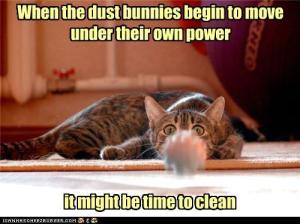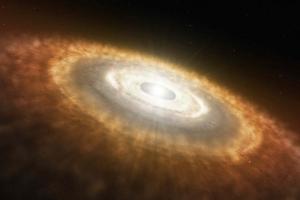 |
| Our happy little solar neighborhood |
One of my favorite topics in doing outreach events with NASA is planetary science. I'm no planetary scientist, but since I had such an interest in it growing up I've accumulated some knowledge probably appropriate enough for questions I get from students. (Though sometimes they throw in a real zinger, like the kid who asked why Saturn has rings and other planets don't. I was stumped, so I said I didn't know and looked it up later- apparently scientists don't know why that is either!)
THE ORIGIN OF THE SOLAR SYSTEM:
Once upon a time there was a cloud of gas. A cloud of gas in space is called a nebula, and it’s what is left over after a star explodes and destroys whatever solar system was there previously. The earliest nebulae formed from hydrogen and helium pulled together into denser clumps in the aftermath of the big bang. Our own solar system was probably formed about 4.6 billion years ago from leftovers from the big bang and exploded stars nearby. A nebula that our solar system formed from might look similar to the one below, which is a real nebula in the Milky Way galaxy!
 |
| NGC 2440, a Milky Way nebula |
As the blob of space gas squished it formed into something called a “protoplanetary disk.” This is a round Frisbee (or pizza!) shaped disk of gas and dust around a denser center part where gravity is slowly pulling gas and dust together into what will someday be a baby sun. Once the sun gathered enough gas the density became insanely high- high enough that fission took place, igniting the gas and causing the bright light and radiation of a star.
THE PLANETS ARE FORMED:
Matter tends to accumulate into little balls of stuff. If it’s under your bed you call them dust bunnies. If it’s in space and big enough you call it a planet.
 |
The outer planets formed from loose collections of slightly more dense dust grains and ices then grew larger until they formed Jupiter, Saturn, Neptune and Uranus. The inner planets formed out of metals and silicates, the inner solar system being too warm to support frozen ices. As the bits of matter got larger they smashed into each other and grew even larger through a process called accretion. The whole process is still a bit mysterious, as we weren’t around to observe it. However, by the end of all this accumulating and smashing the teenage solar system was formed, with 8 planets, an asteroid belt between Mars and Jupiter, (of things that didn’t get accumulated or smashed significantly enough to make planets) and a Kuiper belt at the edge of the solar system (also things that weren’t significantly smashed).
Our knowledge of the early solar system is changing as we learn more and build new models. We still have many questions to answer, such as where did the water on Earth come from? Why do some planets have rings while others don't? What were the planets like millions of years ago, and what will the Earth look like millions of years from now? I'm excited to be in a time when we are learning so much about our solar system and solar systems around other stars!
Our knowledge of the early solar system is changing as we learn more and build new models. We still have many questions to answer, such as where did the water on Earth come from? Why do some planets have rings while others don't? What were the planets like millions of years ago, and what will the Earth look like millions of years from now? I'm excited to be in a time when we are learning so much about our solar system and solar systems around other stars!
For more information on the early solar system forming, check out these links:


No comments:
Post a Comment